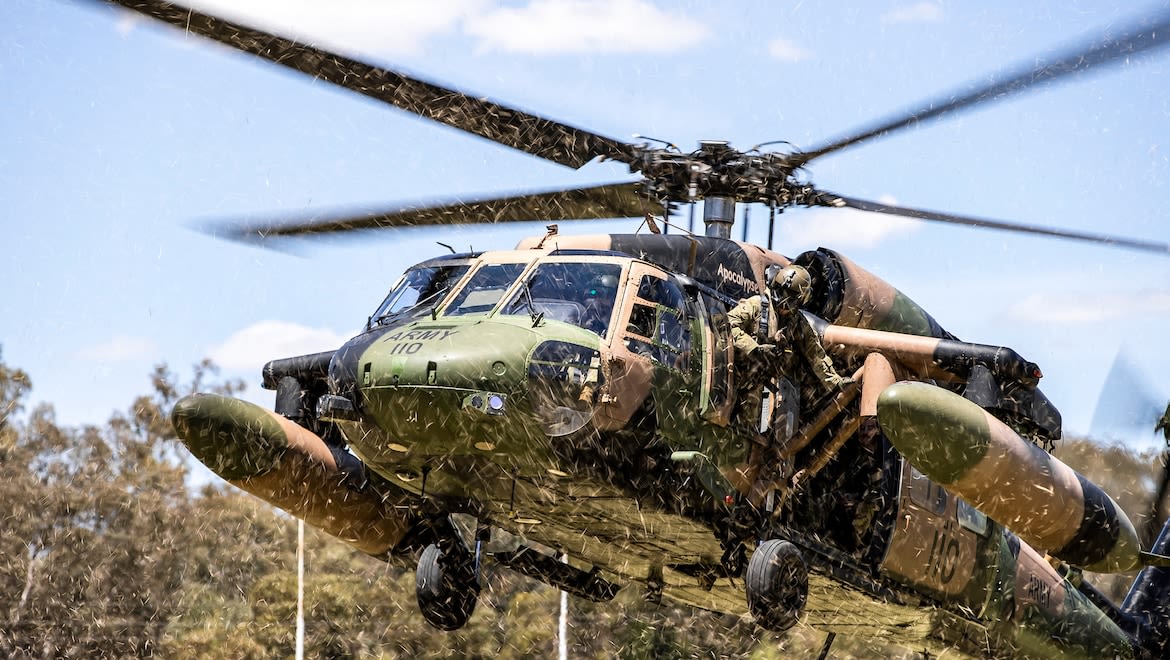Elevate Your Competence: Uh-60 Black Hawk Advanced Handling Techniques
Elevate Your Competence: Uh-60 Black Hawk Advanced Handling Techniques
Blog Article
The UH-60 Helicopter: Navigating With Its Background, Layout, and Significant Function in Aeronautics
The UH-60 helicopter, typically described as the Black Hawk, stands as a testament to the innovations in aviation innovation and its obvious influence on both noncombatant and military operations. From its humble beginnings to its present standing as an icon of reliability and adaptability, the advancement of the UH-60 has been marked by constant technology and adaptation to satisfy the progressing needs of the aviation industry. As we look into its background, design complexities, and the vital role it plays in different fields, a much deeper appreciation for this renowned helicopter emerges, clarifying the substantial payments it has actually made to the world of aeronautics.
Development of the UH-60 Helicopter

The advancement of the UH-60 helicopter can be traced back to the demand for a versatile and trusted utility airplane that can satisfy the requiring needs of modern armed forces procedures. Established by Sikorsky Airplane, the UH-60 Black Hawk initially took trip in 1974, with the U.S. Military becoming its key operator. Over the years, the UH-60 has actually undertaken several upgrades and variations to enhance its capacities and efficiency.

Layout Technologies and Functions

Furthermore, the UH-60 features a sophisticated avionics collection that consists of sophisticated navigation systems, communication equipment, and electronic screens. These technical improvements enhance situational awareness for the crew, enhancing total goal performance and safety and security. The helicopter's sizable cabin style facilitates easy and quick loading and discharging of soldiers, devices, and casualties, making it a flexible asset for military procedures and catastrophe alleviation initiatives.
Additionally, the unification of composite materials in crucial structural components reduces weight while maintaining resilience, increasing the UH-60's efficiency and fuel performance. The UH-60 helicopter's ingenious design aspects collectively add to its credibility as a dependable and very capable airplane in both armed forces and noncombatant air travel sectors.
Noncombatant and military Applications
With functional capabilities matched for a variety of functional needs, the UH-60 helicopter offers both here are the findings military and noncombatant sectors successfully (uh-60). In military applications, the UH-60, generally referred to as the Black Hawk, plays a critical role in army transport, clinical emptying, combat support, and search and rescue goals. Its capacity, speed, and agility to run the original source in various environments make it a useful property for armed forces procedures worldwide. The UH-60's sophisticated avionics, protective systems, and adaptability have strengthened its setting as a foundation of army helicopter fleets.
In the noncombatant industry, the UH-60 serves a multitude of functions, consisting of firefighting, police, emergency clinical services, and business transport. Its reliability, maneuverability, and spacious cabin make it a popular selection for energy missions. Additionally, the UH-60's adaptability for VIP transportation and offshore operations better highlight its importance in civilian applications. Whether in army or civilian usage, the UH-60 helicopter remains to verify its worth as a flexible and vital airborne platform.
Influence On Aeronautics Workflow
Having actually established its significance in civilian and military applications, the UH-60 helicopter's impact on air travel operations prolongs beyond its versatile capacities to affect a wide range of aerial objectives. In armed forces settings, the UH-60 plays a crucial role in troop rescue, search and transportation procedures, clinical discharge, and special operations support.
Furthermore, the UH-60's reliability and endurance make it a recommended choice for utility goals, including transportation of freight and workers to remote locations. On the whole, the UH-60 helicopter substantially impacts aeronautics operations by providing unparalleled abilities and assistance across a wide spectrum of goals.
Future Advancements and Prospects
The advancement of the UH-60 helicopter is poised to revolutionize click to investigate air travel capacities and improve functional paradigms in the coming years. Advancements in innovation and design are driving the advancement of next-generation UH-60 versions that assure increased speed, dexterity, and goal convenience. One essential location of focus for future UH-60 models is boosting autonomous abilities to boost operational effectiveness and safety and security. By incorporating sophisticated independent trip systems, the UH-60 can reduce pilot workload, make it possible for complex objectives in tough environments, and improve total mission efficiency.
Moreover, there is an expanding focus on sustainability and gas effectiveness in the design of future UH-60 helicopters (uh-60). Manufacturers are exploring new materials, propulsion systems, and aerodynamic enhancements to minimize environmental effect and operating prices. These innovations not just benefit the environment yet additionally add to the long-lasting practicality and competitiveness of the UH-60 in the rapidly evolving aeronautics sector
Verdict

The UH-60 helicopter, often referred to as the Black Hawk, stands as a testament to the developments in air travel innovation and its indisputable effect on both noncombatant and army procedures.Having actually developed its value in private and armed forces applications, the UH-60 helicopter's effect on air travel procedures expands past its functional capacities to affect a vast selection of aerial missions. In general, the UH-60 helicopter substantially impacts aviation operations by providing unrivaled capabilities and support across a broad spectrum of missions.
The evolution of the UH-60 helicopter is poised to transform air travel abilities and reshape operational standards in the coming years. As modern technology proceeds to breakthrough, the future growths and potential customers for the UH-60 helicopter stay encouraging, guaranteeing its continued significance in the field of aviation.
Report this page